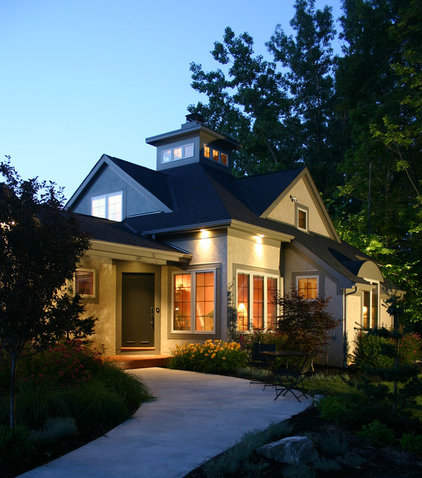by Laura Gaskill
Leaving for the holidays? Even if your trip prep list is a mile long, taking the time to go through a few extra steps to ensure that your house is well cared for can bring a lot of peace of mind. Installing a home security system may be the first thing you think of, but there are plenty of smaller steps you can take that are just as (or even more) effective in deterring theft.
Here are 10 things you can do to make sure that your home is safe and sound, and you can enjoy your trip without worry.
Here are 10 things you can do to make sure that your home is safe and sound, and you can enjoy your trip without worry.
1. Tell neighbors you'll be away. Even if you rarely speak with your neighbors, it is important to give them a heads-up when you are leaving town for a week or more. If you have a good relationship with a neighbor, consider leaving a copy of your key in case of emergency — or at least your contact info while you're away and the phone number of someone locally who has a key.
Think twice, however, before sharing specific details about your trip on social media or through a blog. I know plenty of people do, and nothing comes of it, but file this under "Better safe than sorry." |
2. Use light timers and motion sensors. Giving the impression that your home is occupied is one of the surest ways to deter theft. Pick up a basic light timer at the hardware store and program your interior lights to flick on for several hours each evening — you can even set the TV to turn on as well.
If you don't already have motion-sensitive lights outdoors (front, back and side), consider installing them before you leave. If you already have them, make sure the bulbs work before you go. |
3. Hire a pet sitter or house sitter. Even better than creating the appearance of someone staying in the house is someone actually staying in the house. Hiring a pet sitter to stop by once or twice each day is a smart choice. Not only will your pet be happier at home than in a kennel, but your house will be looked after as well — most pet sitters will gladly bring in the mail and water a few plants.
No pets? Consider doing a swap with a friend or family member in the area — he or she watches your house this time, and you return the favor later on. Or hire a professional house sitter. |
4. Lock up. It sounds almost too simple to mention. But really, it's all too easy to forget to latch all of those less frequently used windows and doors in the rush to catch a plane. Write a big note and stick it near your car keys as a reminder to do a thorough lockup before leaving.
|
6. Keep up the appearance of routines. If you will be away for more than a week, see if one of your neighbors can bring your garbage and recycling bins out for you and back in the next day.
Also, don't let mail pile up on the porch; have the postal service hold your mail for up to 30 days instead. You can fill out the form online here, so you don't even need to step foot in the post office during this busy time. Likewise for newspapers — contact your newspaper carrier to suspend service while you are away. |
7. Keep trees and shrubs trimmed for visibility. Make it more difficult for someone to break in unnoticed by keeping trees and hedges trimmed back. Ideally, all windows and doors should be visible, with little room for a person to duck down and hide.
|
8. Keep that snow or lawn service coming. Not only will it be a relief to come home to a neatly shoveled path and tidy yard, but maintaining a normal level of care will help give your house a lived-in look while you are gone
9. Move valuables away from windows.You may want to leave a few shades open, since it can look rather odd to see a house all closed up if that is not your norm. However, do be aware of what is visible from those open shades when someone is peering in from the outside. Laptops, flat-screen TVs and other pricey gear within reach of a window make an easy mark for a smash-and-grab-type burglar.
|


